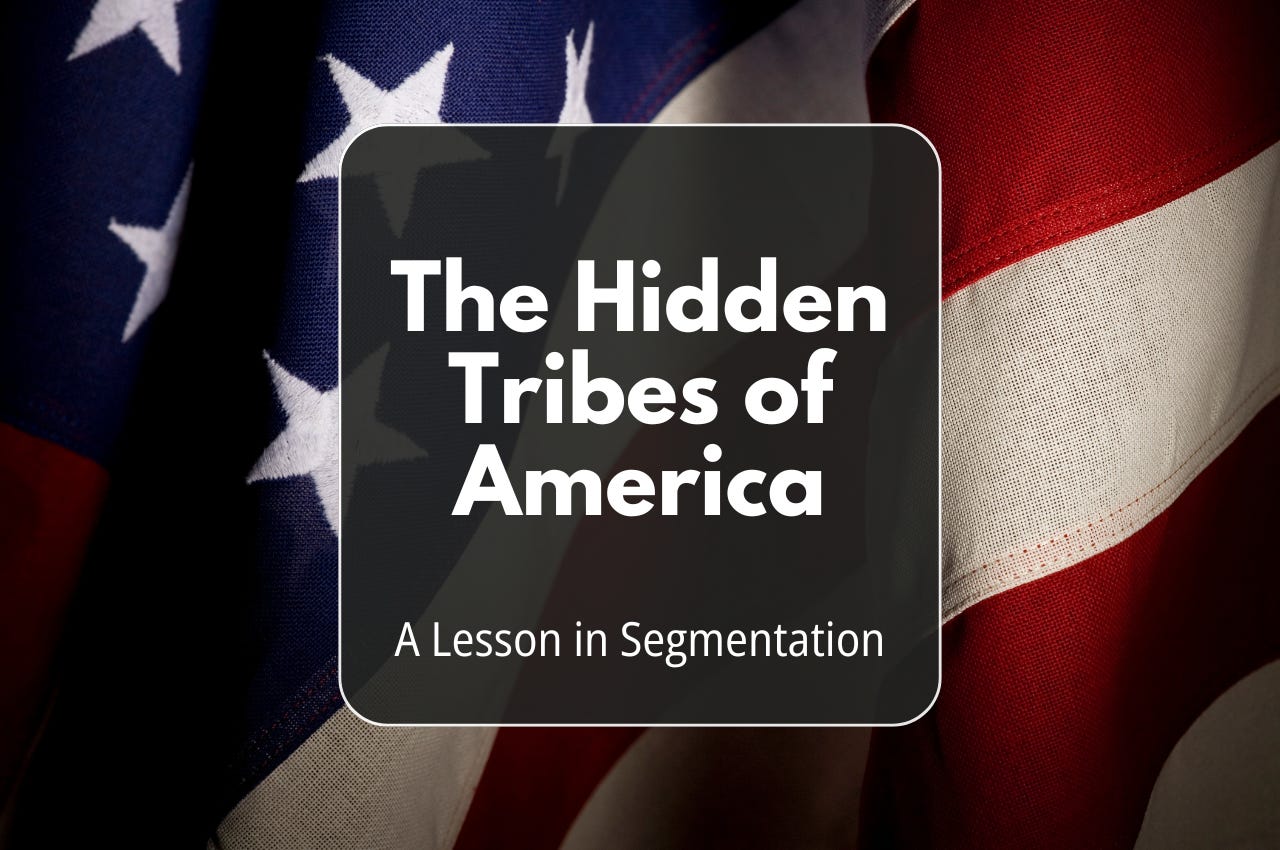The Hidden Tribes of America: A Lesson in Segmentation
A Humble Marketer’s Take on U.S. Campaigns and the Power of Targeted Messaging
In both marketing and politics, success hinges on understanding your audience. For years, U.S. political discourse has been framed as a battle between two opposing camps—Red vs. Blue, Left vs. Right. Yet, research from More in Common’s Hidden Tribes report challenges this simplistic view. Instead of a binary, the U.S. electorate is divided into seven distinct voter segments, each with unique concerns, values, and motivations.
But here’s the thing: regardless of who wins or loses, the real reflection begins the day after the election. The following hours and days are filled with analysis, where pundits fill airwaves and publications with their assessments of what went down. I’m not a pundit, but while consuming this post-election content, I came across a reference to Hidden Tribes, a study from 2018. Though a few years old, the insights remain highly relevant today, offering a lens through which to better understand our citizenry—and the complexities of running a national campaign.
Let’s face it: a national campaign is a giant job interview where the employer is the American people.
Beyond Red vs. Blue: The Power of Segmentation
If you’re a marketer, a campaign strategist, or simply curious about societal dynamics, there’s a crucial takeaway here: oversimplification leads to missed opportunities. More in Common’s Hidden Tribes research reveals that America’s political landscape is far more nuanced than traditional labels suggest. Whether running a marketing campaign or crafting a political vision, ignoring this diversity leads to ineffective messaging.
Segmentation ensures that your message reaches the right people in the right way at the right time.
The Seven Segments of U.S. Voters
Here’s a quick breakdown of the seven voter segments identified in Hidden Tribes:
1️⃣ Progressive Activists: Vocal and deeply committed to systemic reform and social justice.
2️⃣ Traditional Liberals: Value civil liberties and favor gradual, incremental change.
3️⃣ Passive Liberals: Support liberal policies but avoid active political engagement.
4️⃣ Politically Disengaged: Feel detached from politics, often skeptical about its relevance.
5️⃣ Moderates: Pragmatic, centrist, and open to compromise on key issues.
6️⃣ Traditional Conservatives: Value tradition and prefer limited government.
7️⃣ Devoted Conservatives: Strongly conservative, prioritizing nationalism and moral values.
Each group reflects different attitudes toward governance, policy, and societal values. Understanding these groups offers an opportunity to connect with them on a deeper level, be it through political platforms or marketing campaigns.
Lessons for Marketers and Society
So, what can marketers learn from voter segmentation? Much like political campaigns, marketing efforts thrive on precision. Here’s why:
• 🔍 Segmentation reveals customer needs. Tailored messaging ensures relevance.
• 📣 Positioning increases resonance. Speaking to specific values makes your message stick.
• 📊 Metrics ensure impact. Whether your goal is sales or votes, tracking performance refines strategy.
For example, consider a marketing campaign for a new eco-friendly product. To Progressive Activists, you’d highlight sustainability and ethical sourcing. For Moderates, the focus could shift to the product’s practicality and cost-effectiveness. The messaging changes, but the goal remains the same—resonating with the audience.
Ultimately, segmentation offers a broader societal lesson: understanding our differences is key to bridging divides.
Final Thoughts
Segmentation matters. Whether designing campaigns, crafting messages, or simply trying to understand your community, moving beyond one-size-fits-all thinking is essential. The Hidden Tribes framework provides valuable insights into American society's diverse and complex nature.
Curious to dive deeper? Explore More in Common’s Hidden Tribes: A Study of America’s Polarized Landscape here .




